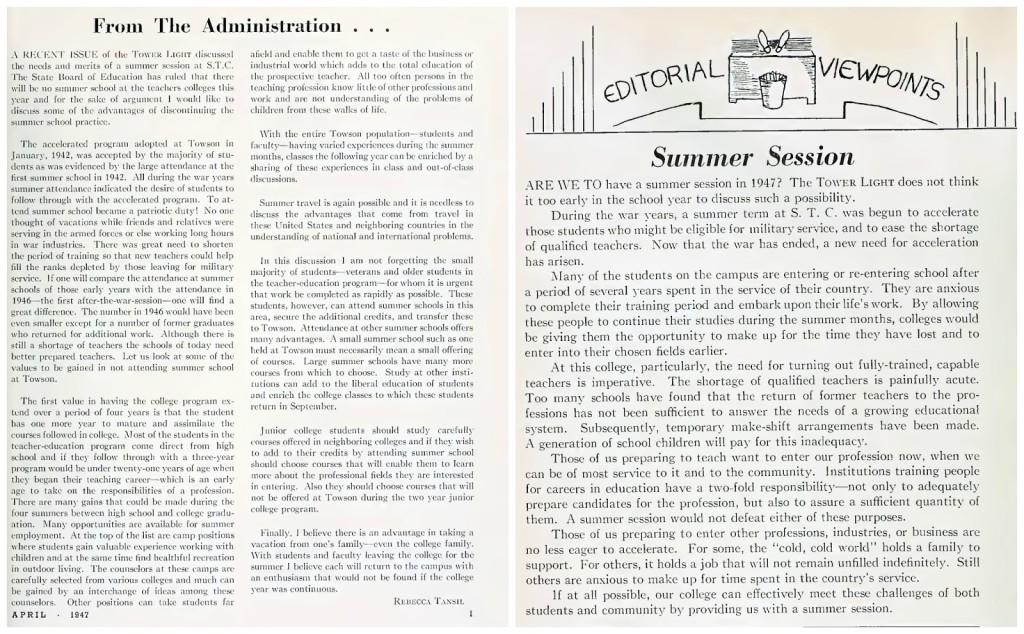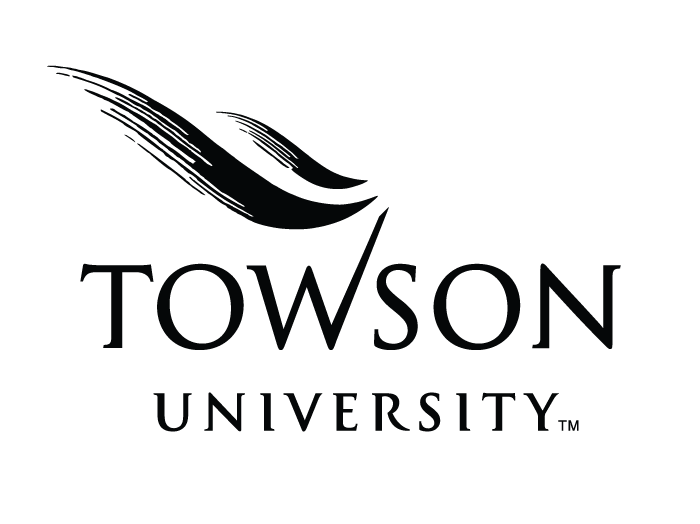
Editorial commentary after World War II regarding whether summer sessions should continue at Towson University
After the frantic last days of the semester end and all the exams are graded, diplomas are delivered, and the dorms are packed up and cleared out, campus becomes amazingly quiet. Parking suddenly becomes a breeze. The grounds are all dressed up with gorgeous flowers, but sometimes it seems the only people around to enjoy them are Kanji, summer campers, and tour groups.
But of course, classes are still being held. In fact, for much of its 150-year-history, Towson University has conducted some kind of program during the summer, and even beyond the traditional academic school day and season.
In the beginning
When the Maryland State Normal School (MSNS) opened its doors in 1866, it welcomed about 50 students that each county had recommended to be trained as teachers. Enrollment grew but never was it able to keep up with the demand for teachers in the counties. This meant not all teachers were meeting the same standards as those trained by MSNS, and so the solution was to hold “Teachers Institutes” where additional training for teachers already in place in the school system could be provided by trained Examiners.
The summer sessions ceased until the university moved to Towson in 1915. Focused on in-classroom professional development, the sessions also provided for “opportunities for community singing, lectures, and art appreciation demonstrations. Every Friday evening some social, musical or literary entertainment will be held. Saturdays will be devoted, as far as possible, to excursions of a recreational and educational character.”
Accelerated education
With the beginning of World War II, the demand for teachers increased as many veteran teachers went off to war or civil service jobs. In order to meet the demand, STC created an accelerated program to educate teachers in three years instead of four. In 1942, summer classes were again held on campus, and the campus elementary school students were back in session.
The 1951 course catalog states “the college provides for part-time and summer study.” The summer study session remained as it had in 1949, but now “part-time study including late afternoon or evening classes for teachers on emergency certificates who wish to work toward their degrees or renew certificates.” In addition, STC students who wanted to graduate earlier could take classes, but “permission for acceleration will be granted to only a very few individuals with superior records.”
Adding advanced degrees
In 1958, the first master’s program on campus included a summer program so teachers could take advantage of classes while on summer break from their work. Evening classes were established year-round in 1963 and winter sessions began in 1972. Towson U even added Saturday classes in 1978 to give students even more options to fit their schedules.
After the Colleges were established in 1981, the College of Continuing Studies was created and supported the many non-traditional learners that were now enrolled at Towson State University (TSU).
Today, summer, minimester, evening, and even online classes are such a part of the fabric of Towson University, that they are no longer considered unusual.
